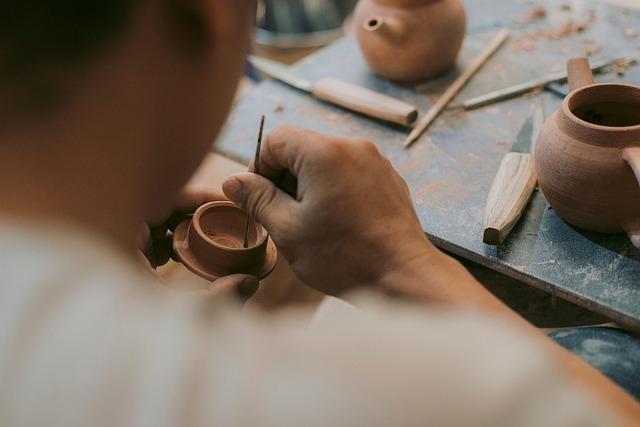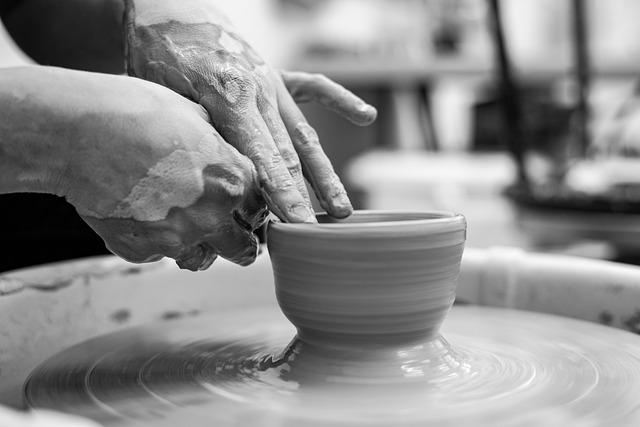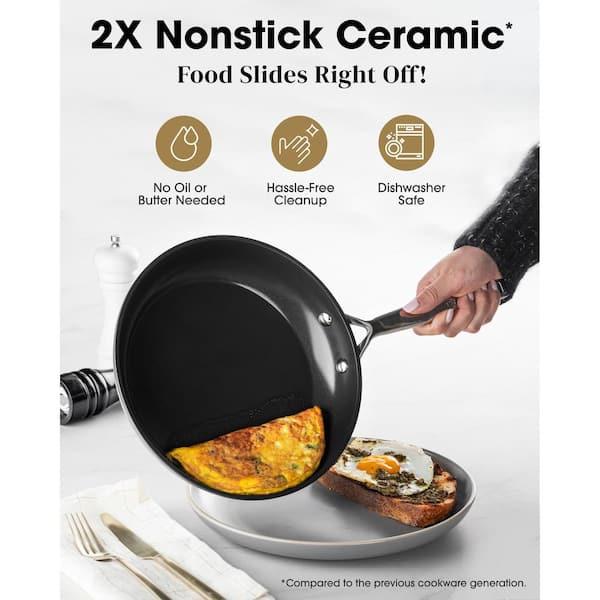In the realm of culinary craftsmanship, the choice of cookware can significantly impact both the cooking experience and the longevity of your kitchen investments. When it comes to nonstick surfaces, ceramic and traditional nonstick coatings emerge as two popular contenders, each boasting unique qualities that cater to different cooking styles and preferences. But which one promises a longer lifespan, enduring the daily rigors of simmering sauces and sizzling stir-fries? Join us on a journey through the pros and cons of these two intriguing options, as we unravel the truth behind their durability, maintenance needs, and performance in the heat of gourmet creation. Whether you’re a home chef seeking efficiency or a culinary artist striving for perfection, understanding the differences between ceramic and traditional nonstick coatings will help you make an informed choice for your kitchen arsenal.
Understanding the Basics of Ceramic and Traditional Nonstick Coatings
The world of cookware is rich with options, but two of the most prominent contenders are ceramic and traditional nonstick coatings. Ceramic coatings are made from inorganic materials, often using silica, which provides a natural, chemical-free nonstick surface. These coatings are known for their ability to withstand higher temperatures without the release of harmful chemicals. Additionally, they are usually free of PFOA and PTFE, making them a safer choice for health-conscious individuals. Traditional nonstick coatings, typically made with Teflon, utilize polytetrafluoroethylene (PTFE) for enhanced food release. Although they offer excellent nonstick properties, they can sometimes degrade at high temperatures, leading to the release of toxic fumes if overheated.
When considering durability, both coating types exhibit distinct characteristics. Ceramic coatings are more prone to scratching and may not last as long under rigorous use. However, they are often praised for their resistance to stains and ability to maintain a consistent cooking surface. On the other hand, traditional nonstick pans usually have a longer initial lifespan if well cared for, but they can quickly lose their effectiveness if not maintained properly. When deciding between the two, consider the cooking habits and preferences you hold dear. Here’s a simple comparison of their key features:
| Feature | Ceramic Coating | Traditional Nonstick Coating |
|---|---|---|
| Health Safety | Free of PFOA and PTFE | May contain PFOA or PTFE |
| Temperature Resistance | High heat tolerance | Can degrade at high temperatures |
| Durability | Scratches easily | Longer initial lifespan |
| Maintenance | Requires non-abrasive tools | Requires careful handling |

Longevity Showdown: Material Durability and Maintenance Factors
When evaluating the longevity of ceramic cookware versus traditional nonstick coatings, several factors come into play. Ceramic surfaces are known for their scratch-resistant properties, which allow for the use of metal utensils without compromising the surface integrity. Additionally, ceramic cookware often boasts high thermal resistance, making it less likely to warp or degrade under high cooking temperatures. However, while ceramic can withstand intense heat, its susceptibility to chipping and cracking remains a concern if not handled with care.
In contrast, traditional nonstick coatings, such as Teflon, offer great ease of cooking and cleaning but have a more limited lifespan, particularly if abused. The longevity of these coatings often depends heavily on maintenance practices. To optimize the lifespan of nonstick surfaces, owners should adhere to the following best practices:
- Avoid using metal utensils.
- Hand wash instead of using a dishwasher.
- Use low to medium heat settings to prevent overheating.
While ceramic may have an edge in durability, regular maintenance is essential for keeping nonstick coatings functioning effectively over time.

Heat Resistance and Cooking Performance: What You Need to Know
When evaluating heat resistance and cooking performance, it’s essential to consider how these factors influence the longevity and effectiveness of both ceramic and traditional nonstick coatings. Ceramic cookware is often hailed for its ability to withstand high temperatures without releasing toxic compounds. This makes it an appealing choice for health-conscious cooks. In contrast, traditional nonstick coatings, while offering excellent food release characteristics at lower temperatures, can degrade over time, particularly with exposure to high heat. Here are a few key points to ponder:
- Temperature Tolerance: Ceramic coatings generally tolerate higher heat levels, making them suitable for everything from sautéing to baking.
- Chemical Stability: Traditional nonstick coatings may break down and emit fumes at elevated temperatures, raising health concerns.
Ultimately, the cooking performance of each type of coating greatly impacts daily usability and maintenance. First, ceramic cookware often features a robust construction that can hold its form under sustained heat, ensuring a reliable cooking surface for various culinary adventures. Conversely, while traditional nonstick coatings excel in providing a smooth, easy-to-clean surface, they do require more cautious handling. The following comparison illustrates their heating resilience:
| Feature | Ceramic | Traditional Nonstick |
|---|---|---|
| Heat Resistance | Up to 850°F | Up to 500°F |
| Durability | Highly durable, scratch-resistant | Less durable, prone to scratches |
| Health Safety | No toxic fumes | Can emit fumes if overheated |

Choosing the Right Option: Recommendations for Your Cooking Style
When it comes to selecting cookware, your personal cooking style plays a crucial role in deciding between ceramic and traditional nonstick coatings. If you are someone who enjoys cooking at high temperatures, ceramic may be the better option for you. Its ability to withstand higher heat without breaking down means it can keep up with your culinary adventures, from searing meats to baking casseroles. In contrast, for those who prefer low to medium heat cooking, traditional nonstick pans provide convenient cleanup and exceptional food release, making them ideal for everyday dishes like scrambled eggs or pancakes.
To further guide your choice, consider these factors:
- Cooking Frequency: Ceramic is better for frequent use, while traditional nonstick works for occasional cooking.
- Maintenance Effort: Ceramic may require a bit more care to maintain its nonstick surface.
- Health Considerations: If chemical coatings concern you, ceramic is often regarded as a healthier alternative.
- Budget: Assess your budget, as prices for both options can vary significantly depending on brand and quality.
The Conclusion
As we reach the conclusion of our exploration into the longevity of ceramic versus traditional nonstick coatings, it’s clear that the choice between the two undeniably hinges on a variety of factors. While ceramic coatings boast eco-friendliness and a slightly longer lifespan under careful use, traditional nonstick surfaces deliver on convenience and ease of maintenance for the everyday cook. Ultimately, your selection will depend on your cooking habits, environmental considerations, and personal preferences.
In the culinary world, there’s no one-size-fits-all solution; each option presents a unique blend of benefits and challenges. Whether you lean toward sleek modernity with ceramics or time-tested tradition with nonstick surfaces, the right choice will enhance your kitchen experience and make each meal a little more enjoyable. So, as you stand at the crossroads of your cookware journey, consider your cooking style, lifestyle, and values—after all, the true mark of a lasting kitchen is not just in the materials, but in the love and creativity that goes into every dish. Happy cooking!




